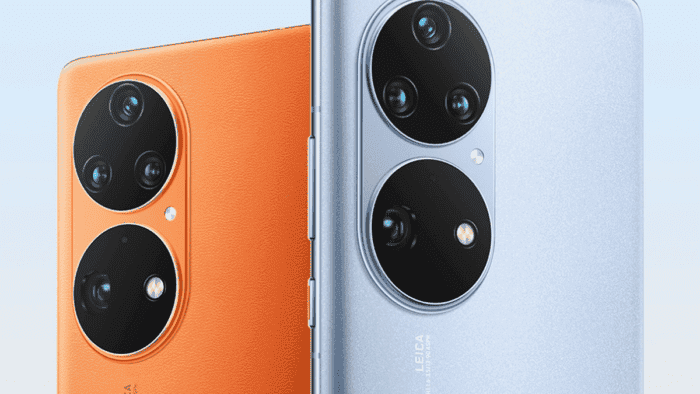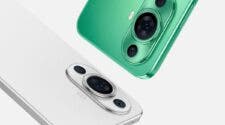In the past 10 years, technological breakthroughs in CMOS sensors, signal processing, and AI artificial intelligence have made a “great leap forward” in the development of mobile phone camera capabilities. The frequency of use of digital cameras has been greatly reduced, and mobile phone photography has become a TOP-level rigid need for users to record their daily lives. Mobile phone photography is getting easier to use and it is attracting more users. On the contrary, the continuous improvement of users’ demand for mobile phone photography has also forced mobile phone manufacturers to continue to improve their camera technology. This rapid development brings the smartphone camera into a new era.

The greater significance is that the continuous breakthrough of smartphone camera technology has broken the “monopoly position” of professional photographers. This is making more people, even amateurs image creators. Creation no longer requires expensive equipment or advanced photography skills. All you may need is a smartphone and choose a good scene. When it comes to good camera technology, Huawei is the best. How does the company do this? Let’s discuss its advancement below
Technological Innovation Creates Leaders: Huawei’s Way to Success
In the development process of mobile imaging, each mobile phone manufacturer has different technical directions. They also have differences in the judgment of user needs and future development trends. In the early days, most manufacturers did not have their own camera technology systems. At the time, most of them imitated and followed, drawing on the existing mature solutions. However, if the timeline is pulled back in the last 3-5 years, the video technology level is much better.
Although everyone has a high level of vertical photography, there are still levels of horizontal comparison of comprehensive strength. Huawei has been able to turn its camera technology into a brand icon. With Huawei, consumers can buy a smartphone for its ability to take pictures. Among Chinese mobile phone brands, it seems that only Huawei is the only one. Some people say that you can always trust Huawei when taking pictures, which seems reasonable.
Top 3 core factors for Huawei’s success with camera technology
In fact, from the earliest stage of Huawei’s camera technology development, it has highlighted the innovative investment of “dare to be the first”, and it has been unswerving. For example, from the dual-camera system of the Huawei P9 series to the portrait photography of the P10 series; from the super night scene mode and periscope telephoto structure of the P20 series to the full-time and full-focus ultra-clear images of the P40 series, Huawei has been top-notch. The company even has computational optics, a primary color engine, etc. in the Huawei P50 series. Huawei’s little bit of imaging progress has gone deep into the pain points of mobile imaging. It not only increases the camera technology innovation but also adds more possibilities for photography.
Through continuous innovation, Huawei camera technology has now built an industrial technical specification for future computational photography from the three dimensions of an optical system, imaging technology, and image processing. The company now has a unique mobile photography technology system. This has become a milestone in the development of the imaging industry.
Taking optical systems as an example, Huawei imaging has evolved into several branches.
Gizchina News of the week
1. Huawei multi-camera system
The biggest difference between traditional cameras and mobile phone images is whether they can use the capabilities of multiple cameras for image processing in real-time. Today, mobile phones have undergone multi-stage evolution from single-camera systems, dual-camera systems to multi-camera systems. Multiple cameras can capture multiple frames of raw images with high data volume. This may relate to brightness or depth (main camera + wide-angle; main camera + telephoto; main camera + ToF; telephoto + telephoto RAW File).

For example, the Huawei P50 series comes with a new dual-image unit, a super main camera unit, and a super zoom unit. This camera technology systematically integrates multiple lenses so that thin and light mobile phones can release powerful imaging capabilities.
2. Huawei free-form lens
In an era when mobile phone lenses were generally still plastic, Huawei was the first mobile phone manufacturer to introduce glass lenses into optical systems. Subsequently, Huawei proposed the leading camera technology of free-form lenses. It is also the first in the industry to realize and commercialize it on a large scale.

As we all know, photos taken by wide-angle lenses usually have a certain degree of distortion. The larger the field of view, the greater the distortion and the greater the deformation. This significantly affects the final image perception.
Huawei is the first manufacturer in the industry to use a free-form surface anti-distortion ultra-wide-angle lens, which can achieve individual control of light in different fields of view, such as the incidence angle of light, light intensity, light deflection, and optical path difference, etc. The free-form lens is effectively controlled to suppress picture distortion. Today, you can also see that many manufacturers are using this technology to improve image quality.
3. Huawei periscope telephoto
It is really not easy to get good quality telephoto images from a smartphone. This is because of the physical limitations of space and volume. Through the periscope telephoto, a new form of module design and mechanical structure, the overall focal length can be lengthened by unfolding the optical path in a limited space. In this field, Huawei has also been at the forefront, and has been thinking about and improving its usability, applicability, and overall stability.

After solving the problem of clear and good shots, Huawei began to think about how to make the phone shoot farther. At this time, the periscope gave Huawei inspiration. The periscope telephoto lens of the P30 Pro cleverly turns the trajectory of light by 90° through an optical prism. Furthermore, the super zoom lens is placed horizontally in the body to achieve 5x optical zoom, 10x hybrid zoom, as well as 50x digital zoom.
Huawei P40 Pro has further brought innovative breakthroughs, with a “multi-reflection periscope telephoto design”, the industry’s first 100x binocular zoom, supporting 3x medium and long-distance optical zoom, 10x ultra-long-distance optical zoom, 20x 2x hybrid zoom and up to 100x digital zoom.
The latest Huawei P50 series comes with a 64-megapixel periscope telephoto lens that supports 3.5X optical zoom and 100X digital zoom. Through the blessing of “computational optics”, the 3.5x optical zoom lens achieves an imaging effect no less than 10x physical optical zoom.





